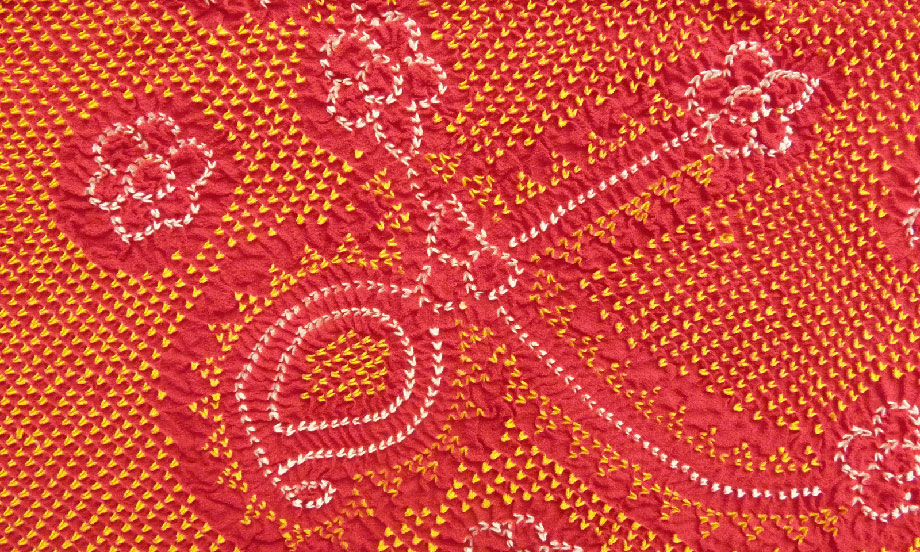Tie Dye
Elinor Gallant
Tie dying is a resist process that may be used on thread before it is woven (to produce ikat), or on woven cloth. The process of tying parts of cloth tightly before submerging in dye, leaving areas undyed, is used in two classic Indian exports – Bandhani and Leheryia.
Bandhana is a Sanskrit word meaning ‘to tie’ – the term Bandhani refers both to the technique and the finished product. By folding the thin cloth into four or more layers, then gathering and tying areas with a plain cotton yarn before dying, circular designs are produced – the finished bandhana range from very simple designs on cotton to intricate patterns on silk making them an item accessible to all of society.
The Bandhani technique of tie dying may be used on various items including saris, using several colours and stages of tying then dying repeated for each colour, from light to dark. What it is chiefly known for is a square spotted scarf (the name bandanna, a deviation from bandhana). Originally exported from India to the west, the Scottish Turkey red industry quickly imitated these designs in print – they became a core product line, with one Glasgow manufacturer claiming to produce 224 bandannas in 10 minutes, and North America being the primary market (think of all the cowboys out west!).
Leheryia is a Hindi word meaning ‘waves’. The cloth is rolled wet around a wooden pole and bound tightly at intervals to create lines. By rolling diagonally the resulting pattern is diagonal stripes, which can be produced in multiple colours by untying some sections after the first dye bath, and tying new sections. A chequered pattern can then be produced by unrolling the cloth and rolling from the opposite corners.
As with Bandhani, Leheria has been imitated in print, making it easier to mass-produce, and therefore sell cheaply. It may be argued that this was not a case of trying to counterfeit the tie dye technique, but to emulate, and perhaps surpass it. However it should be noted that a true tie dyed product will be sold with some of the ties still intact, to evidence its authenticity.

